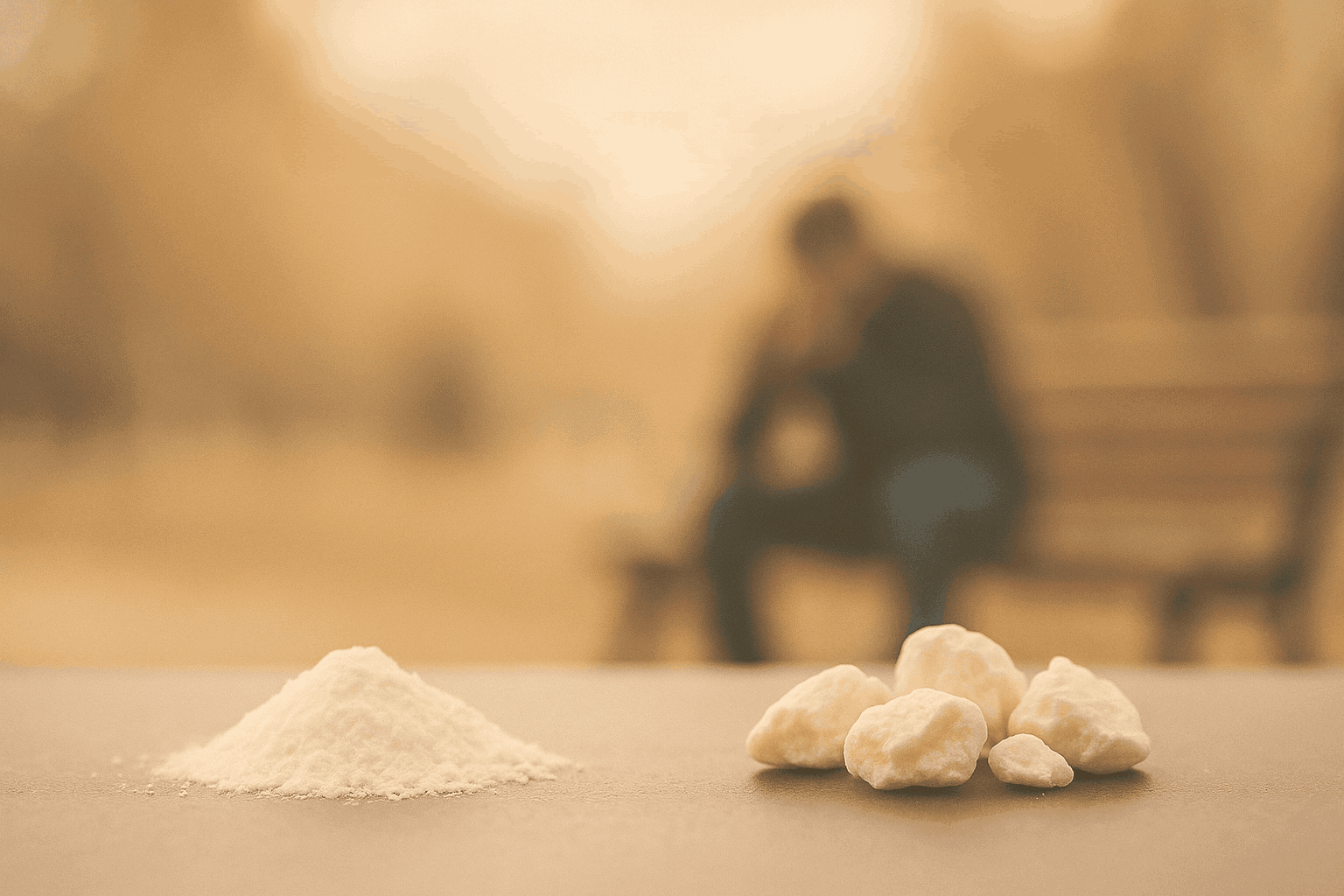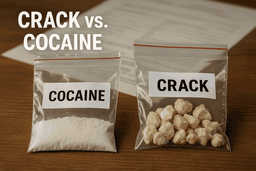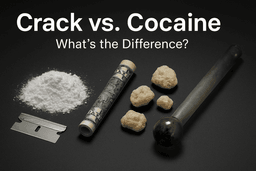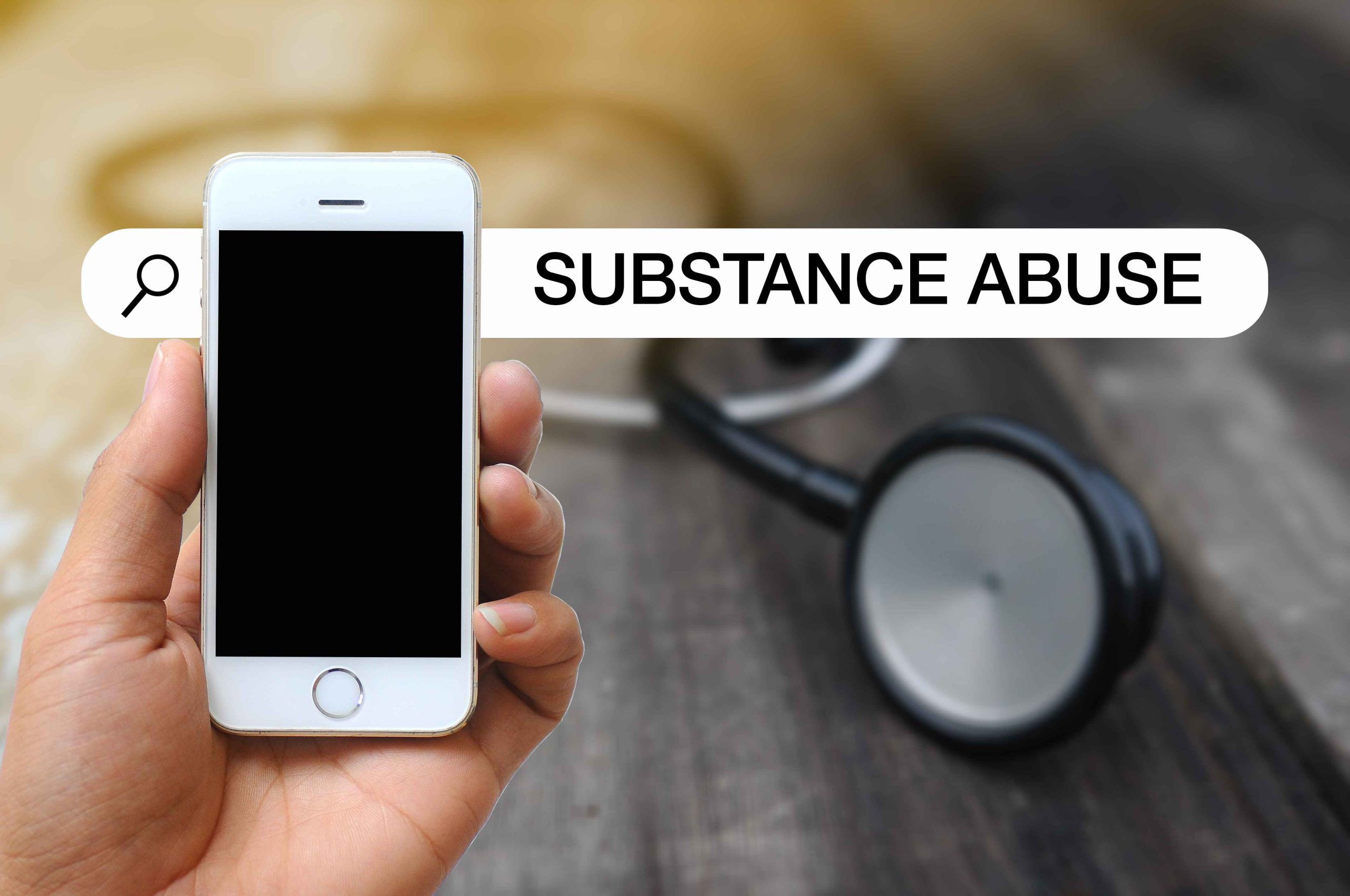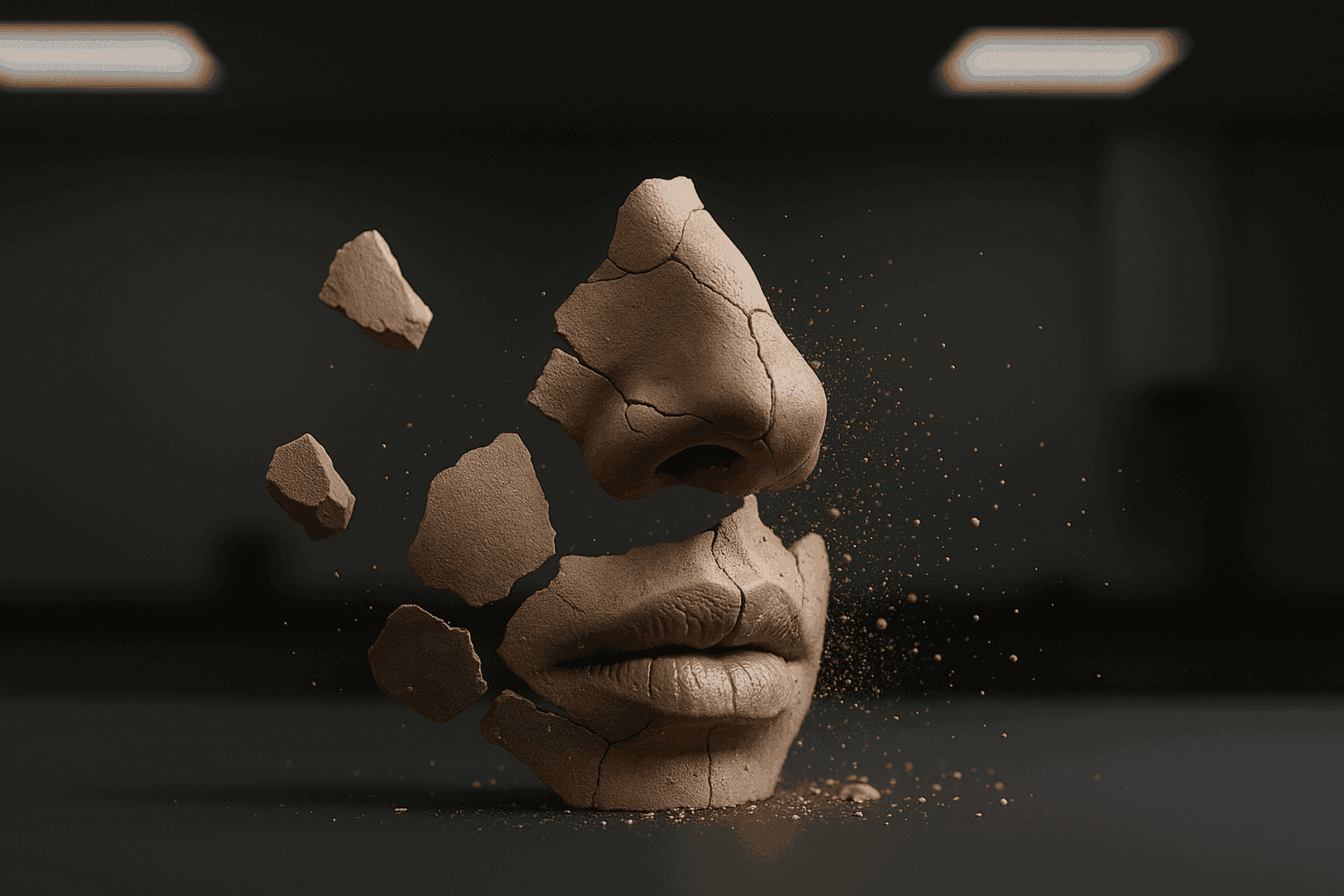Written by: Meri Sargsyan
Reviewed by: Sareen Khodabakhsh, LMFT
A persistent myth in our collective understanding of drugs is that “crack” is just a street name for cocaine. In truth, they are separate entities with a shared origin. This misconception isn’t harmless; it obscures a world of difference in their preparation, potency, and the brutal socioeconomic legacy they carry. Clarifying the line between them is the first step in untangling a complex web of addiction science and a justice system whose response has been anything but just.
A clear understanding of the crack vs cocaine dynamic is not merely an academic exercise; it is fundamental for grasping the nuances of substance use disorders, the controversial rationale behind drug sentencing laws, and the subsequent path to effective, evidence-based treatment. This analysis provides a detailed, point-by-point comparison to demystify these two substances and clarify the critical factors that define their separate identities.
What is Cocaine?
The stimulating properties of cocaine begin with the Erythroxylum coca plant, native to South American regions. Once processed into a white powder, its power lies in its ability to disrupt the brain’s normal chemical communication.
It does this by acting as a reuptake inhibitor. Normally, after a brain cell sends a signal using chemicals like dopamine (linked to reward and pleasure), norepinephrine (linked to energy and alertness), and serotonin (linked to mood), it reabsorbs them. Cocaine slams the door on this reabsorption process. This forces a massive buildup of these neurotransmitters, effectively flooding the brain with signals for euphoria, intense focus, and seemingly limitless energy.
This artificial storm of dopamine is particularly dangerous. It doesn’t just feel good; it hijacks the brain’s natural reward center, teaching it that nothing is more important than finding more cocaine. This is the central engine of its high addiction potential.
This substance is rarely called by its formal name in illicit contexts. Instead, it’s referred to with slang terms like “coke,” “blow,” “snow,” or “powder.”
What is Crack?
Is crack cocaine the same as cocaine? Crack cocaine emerged not merely as a new drug but as a devastatingly efficient economic and chemical product. Its name is derived from the distinct crackling sound its rocky crystals make when heated, the sound of a drug engineered for the pipe rather than the nostril.
Unlike its powdered counterpart, crack is a freebase form of cocaine, created through a simple chemical process that renders it smokable. This method of delivery was a revolutionary and destructive innovation. Smoking crack allows the drug to bypass the body’s slower absorption systems, launching a concentrated dose directly to the brain in seconds. The result is an unparalleled, intensely euphoric rush, but one that is notoriously short-lived, trapping users in a relentless cycle of binge and crash.
What’s the Difference Between Crack and Cocaine?
Although both substances share a common origin, they differ significantly in composition, usage methods, physiological impact, and legal treatment.
Chemical Composition
Powdered cocaine is a hydrochloride salt—a stable, water-soluble compound. Crack is the result of “freeing” the base cocaine molecule from that salt through a cooking process. This isn’t just a name change; it’s a fundamental redesign that changes how the drug behaves under heat.
Method of Use and Onset of Effects
The method of use defines the drug’s impact. Snorting powdered cocaine provides a slower, more controlled release. The user feels the initial effects within minutes, with the full intensity cresting around 10-20 minutes later. Crack, by design, is smoked. This bypasses slow absorption and delivers the substance on a direct express route to the brain via the lungs, achieving a devastatingly powerful peak in under ten seconds.
Duration and Intensity of High
What follows the instantaneous crack high is a precipitous drop. The peak euphoria is so brief, vanishing in under a quarter of an hour, that it creates a powerful physiological and psychological vacuum. To escape the ensuing crash of anxiety and depression, users immediately seek another dose, locking them into a relentless binge cycle. Powdered cocaine offers a less intense but more extended release, resulting in a slower comedown that, while still dangerous, doesn’t demand the same frantic immediacy of response.
Legal Penalties and Sentencing
The brevity of the crack high is its most dangerous feature. The intense rush vanishes in as little as 5 minutes, plunging the user into a severe emotional crash. This directly fuels a binge-and-crash cycle of repeated use to avoid the debilitating lows. Historically, this devastating pattern led to draconian and racially biased sentencing laws that punished crack offenses with exponentially harsher prison terms than powder cocaine, a disparity that remains only partially corrected today.
Historically, legal systems have treated crack offenses much more severely than powder cocaine violations, despite their pharmacological similarities. This sentencing imbalance reflects social and political factors rather than evidence-based assessment of relative harm. Multiple scientific evaluations have confirmed that both substance variations present serious dangers to individuals and communities.
Is Crack More Addictive Than Cocaine?
Yes, crack is generally considered to be more addictive than cocaine. This higher addictive potential is directly linked to its pharmacokinetics, how quickly and intensely it affects the brain. Smoking crack delivers a much larger dose of the drug to the brain far more rapidly than snorting powder cocaine.
This produces an overwhelming surge of dopamine, powerfully reinforcing the drug-taking behavior. The brevity of the high leads to a severe crash, prompting users to seek another dose immediately to alleviate negative feelings, thereby accelerating the cycle of addiction.
Core Differentiators: Crack vs. Cocaine
| Feature | Cocaine | Crack Cocaine |
| Chemical State | Hydrochloride Salt | Base Form |
| Physical Appearance | Fine, white powder | Beige or yellowish rock crystals |
| Primary Administration | Snorted, injected | Smoked |
| Onset of Effects | 1 to 3 minutes (snorted) | 8 to 10 seconds (smoked) |
| Duration of High | 15 to 30 minutes | 5 to 15 minutes |
| Intensity of Rush | Less intense, more gradual | Overwhelmingly intense, immediate |
Research on Health Consequences
Beyond the immediate risk of overdose, chronic use of both cocaine and crack is linked to severe, and sometimes fatal, health complications. Recent research underscores the extensive damage these substances can cause.
1. Expert Harm Assessments
Multiple expert analyses have consistently ranked cocaine among the most dangerous recreational substances:
- A 2010 UK study ranked crack cocaine as the third and powdered cocaine as the fifth most dangerous drug overall, considering factors like harm to users and harm to others.
2. Cardiovascular and Systemic Damage
Cocaine is profoundly cardiotoxic. It can cause sudden cardiac death, myocardial infarction (heart attack), inflammation of the heart muscle (myocarditis), and dangerous arrhythmias. It triggers coronary artery spasms, increases the risk of blood clots, and accelerates atherosclerosis. The severity of heart disease is often directly related to the duration and frequency of use.
3. The Levamisole Crisis: A Modern Adulterant
A major contemporary danger is the pervasive adulteration of the cocaine supply with levamisole, a veterinary deworming agent. Studies indicate that between 50-87% of street cocaine is contaminated with this substance.
4. Addiction Patterns and Treatment Considerations
Addiction patterns can differ between the two substances. Crack addiction is frequently characterized by a binge-and-crash pattern, where users consume the drug repeatedly over a short period. Cocaine powder addiction may involve more episodic use but is equally severe.
Both forms of addiction lead to devastating consequences for physical and mental health, including cardiovascular damage, neurological effects, respiratory failure, and severe psychiatric symptoms. Treatment must be tailored to address the specific patterns of use and the intensity of the cravings associated with each substance.
Treatment Approaches at House of Life
At House of Life, we recognize that effective treatment requires a personalized, evidence-based approach. Our programs are designed to address the unique challenges of stimulant use disorder.
Medical Detoxification and Stabilization
The journey to recovery begins with stabilization. Unlike withdrawal from opioids or alcohol, the challenge with cocaine and crack is not primarily physical. Instead, individuals face a profound neurochemical crash as the brain’s reward system struggles to function without the drug. This can manifest as debilitating low mood, pervasive anxiety, and a crushing lack of energy or motivation.
To navigate this safely, our clinical team offers continuous, around-the-clock medical supervision. This supportive environment is essential for managing these acute psychological symptoms, protecting the patient’s well-being, and establishing a foundation of physical and emotional stability for the next phases of treatment.
John’s Story: A Path to Renewal
John shares his powerful story of transformation and hope at The House of Life. After facing loss, addiction, and homelessness, he took a brave step toward recovery.
Cognitive Behavioral Therapy (CBT)
We move beyond simply talking about problems. Through Cognitive Behavioral Therapy (CBT), clients master practical, real-world techniques to rewrite their relationship with addiction. This evidence-based approach provides the tools to:
- Decode the automatic negative thoughts that trigger substance use.
- Disrupt the cycle of negative feelings leading to self-destructive behaviors.
- Develop a new playbook of healthy coping strategies for cravings and stress.
We believe in healing through action and experience. This includes:
- Experiential and Art Therapies to express emotions and process trauma non-verbally.
- Recreational Therapy through sports like pickleball, basketball, volleyball, and golf to encourage physical wellness and teamwork.
- Horticultural Therapy, using gardening to promote mindfulness, responsibility, and emotional growth.
- Wellness Restoration: Healing the body is a critical step in healing the mind. Our facility offers access to a dry sauna, cold plunge, jacuzzi, and swimming pool to aid detoxification, reduce stress, and improve physical well-being.
- Mindfulness and Outdoor Integration: Clients learn mindfulness, meditation, and yoga to develop stress reduction techniques and mental clarity. Our Outdoor and Nature-Based Therapy takes advantage of the natural environment for walks and projects, leveraging the proven healing power of nature.
Contingency Management (CM)
We employ Contingency Management, an evidence-based intervention particularly effective for stimulant use disorders. This approach uses motivational incentives, such as vouchers or privileges, to reward positive behaviors like maintaining drug-free urine screens. This tangible reinforcement helps build momentum in early recovery.
Insurance Coverage and Treatment Access
Navigating the complexities of insurance coverage for addiction treatment can feel overwhelming. At House of Life, our dedicated admissions team is here to simplify the process. We specialize in conducting detailed insurance verifications, clarifying your specific benefits, and explaining your coverage in clear, straightforward terms.
Crack vs. Cocaine: FAQ
What Counts as Crack?
What Is Crack in Slang?
What Is the Crack Cocaine Disparity?
Is Crack Considered Hard or Soft?
References
European Union Drugs Agency. (2024, June 27). Drug profiles: Cocaine. Retrieved September 13, 2025, from https://www.euda.europa.eu/publications/drug-profiles/cocaine_en
Families Against Mandatory Minimums Foundation. (2018, April). FAQ: The Fair Sentencing Act. https://famm.org/wp-content/uploads/2018/04/FAQ-Fair-Sentencing-Act-4.13.pdf
Nutt, D. J., King, L. A., & Phillips, L. D. (2010). Drug harms in the UK: A multicriteria decision analysis. The Lancet, *376*(9752), 1558–1565. https://doi.org/10.1016/S0140-6736(10)61462-6
Nutt, D., King, L. A., Saulsbury, W., & Blakemore, C. (2007). Development of a rational scale to assess the harm of drugs of potential misuse. The Lancet. https://www.semanticscholar.org/paper/Drug-harms-in-the-UK%3A-a-multicriteria-decision-Nutt-King/06e908830b573a13a3e13001b00d766dc66391f5
Pfeffer, M. R., & Lazar, M. (2011). Levamisole-contaminated cocaine: An emergent cause of vasculitis and purpura. Journal of Clinical & Experimental Dermatology Research, *2*(6), 1000141. https://doi.org/10.4172/2155-9554.1000141



